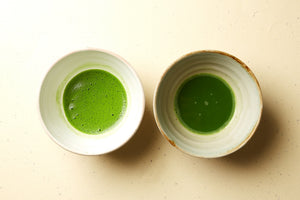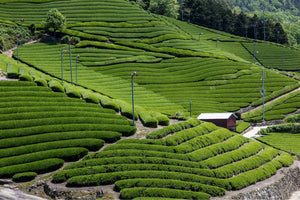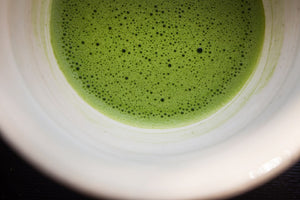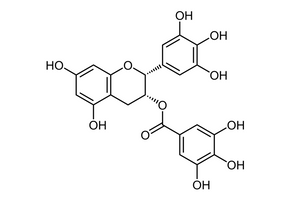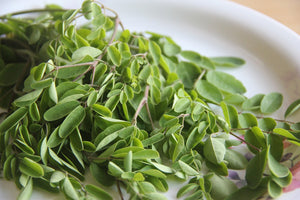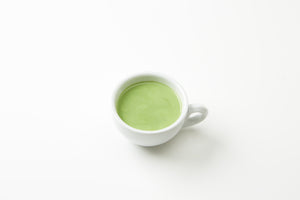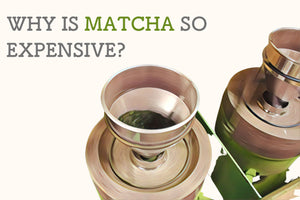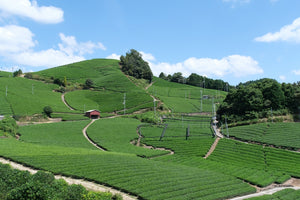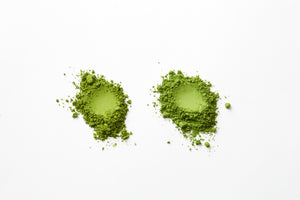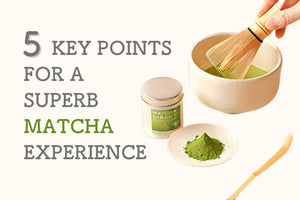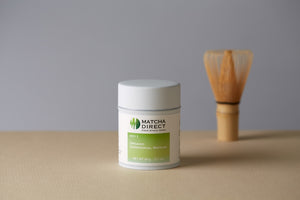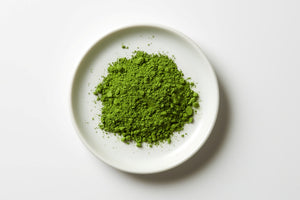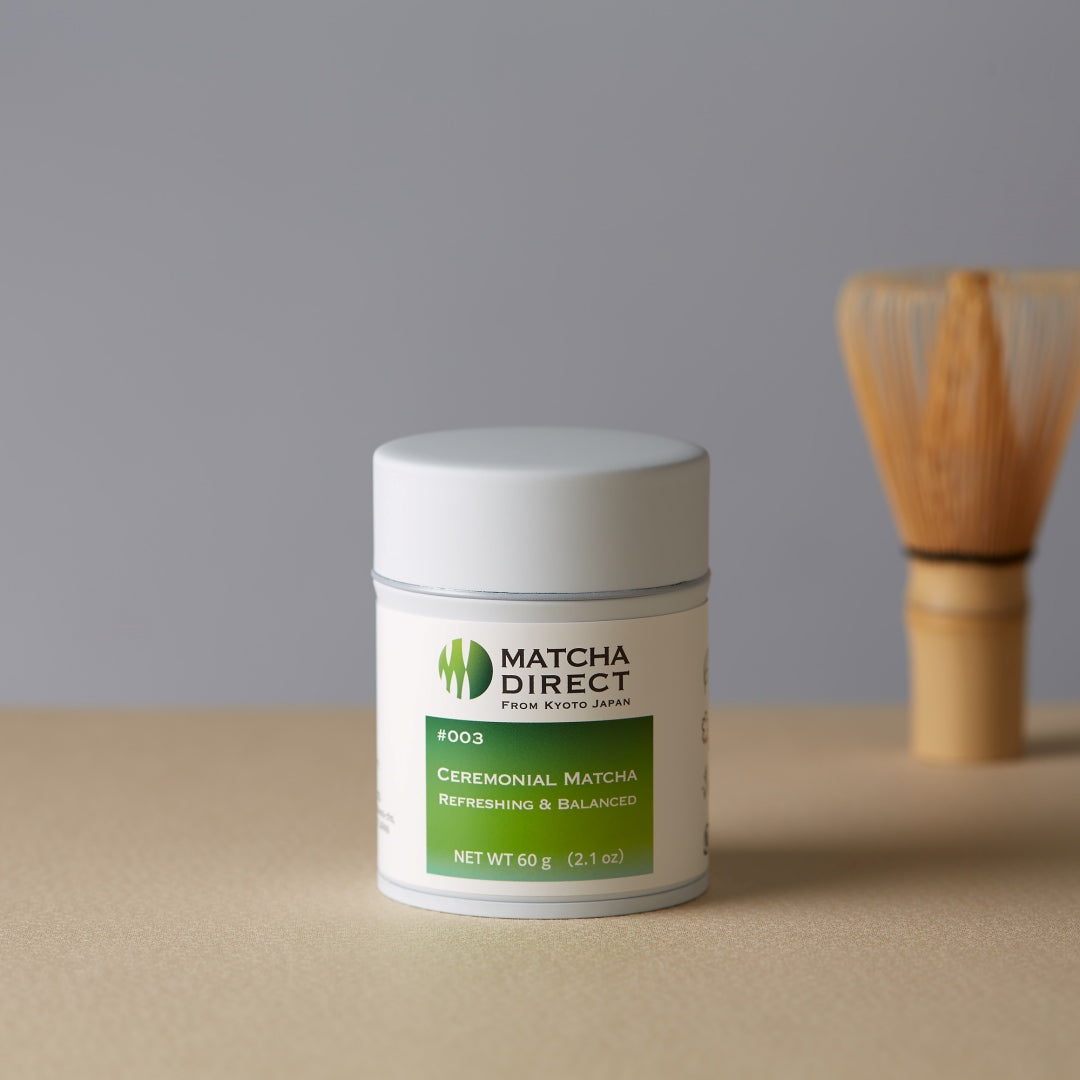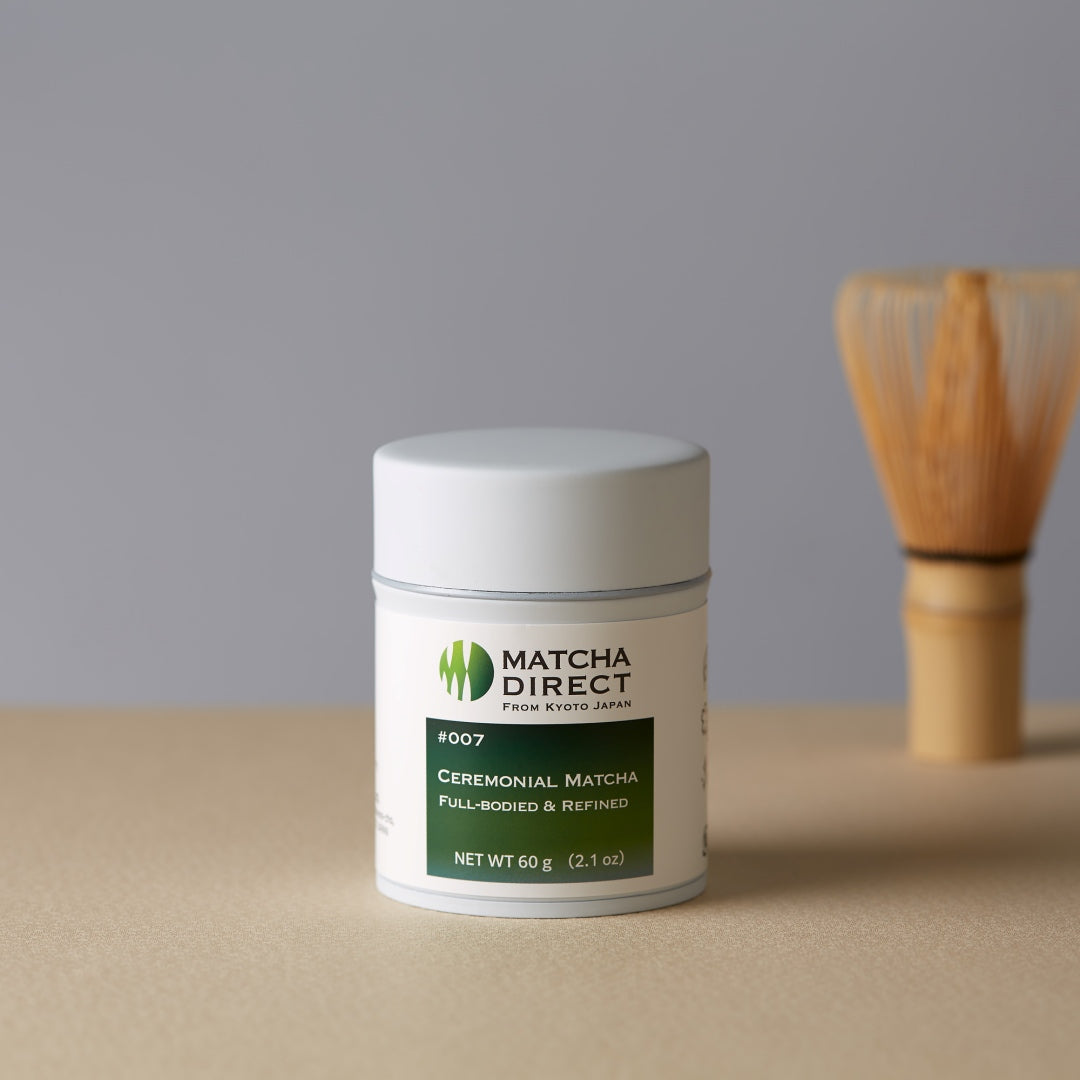Matcha vs. Green Tea - What's the Difference?
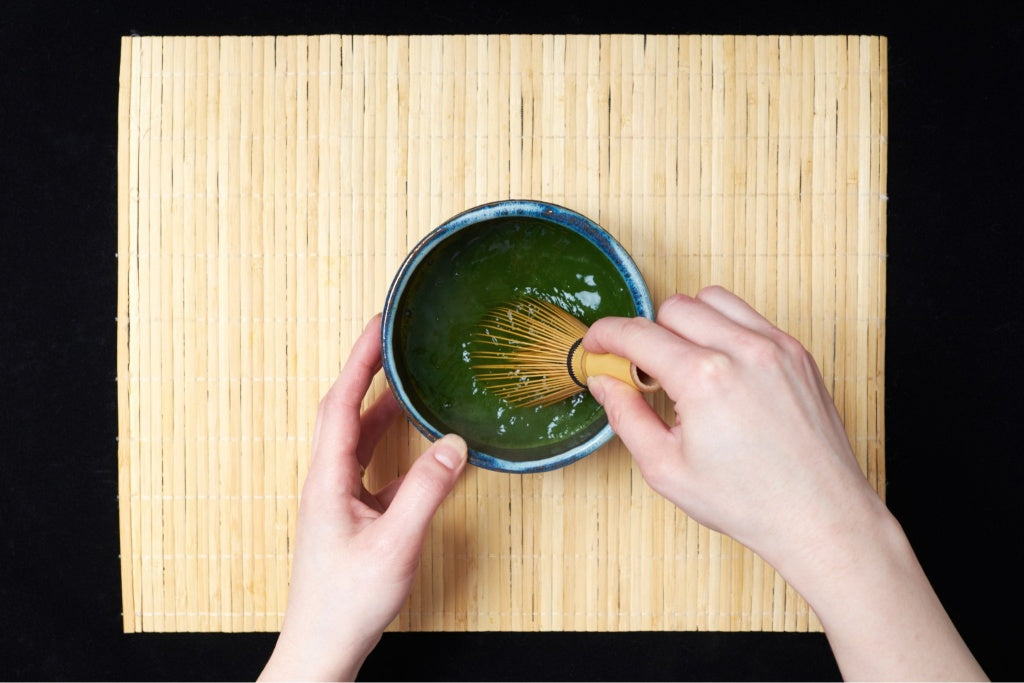
Both matcha and green tea are traditional Japanese teas that are widely cherished around the world.
While both are types of Japanese tea, there are clear differences in the cultivation methods, manufacturing processes, and flavors.
This time, we will explain the differences between matcha and green tea, which continue to be loved worldwide. By comparing their characteristics, production methods, and historical backgrounds, you will be able to understand the unique appeal and originality of each.
Basic Differences Between Matcha and Green Tea
Matcha is made from tea leaves called "tencha," which are powdered and used in tea ceremonies and confectionery, among other things. The tea leaves are grown by blocking sunlight, resulting in vibrant green leaves with rich flavors.
Green tea is made by steaming, rolling, and drying the leaves after they are picked. This process gives green tea its fresh aroma and refreshing taste. The most common type of Japanese green tea is "sencha."
Differences in Cultivation Methods
Matcha and green tea are both made from the same tea leaves, but their manufacturing processes are significantly different.
Cultivation of Matcha
Matcha is made from special tea leaves called tencha.
These tencha leaves are shaded from sunlight about 20 days before harvest. This cultivation method helps the leaves retain a vibrant green color and produce theanine, which is a source of umami flavor, resulting in rich, high-quality tea leaves.
Cultivation of Green Tea
Unlike matcha, green tea leaves are fully exposed to sunlight.
Exposing the leaves to sunlight increases the catechin content, which gives green tea its refreshing and crisp flavor. This method gives leaves with a taste that balances bitterness and a refreshing sensation.
Differences in Processing Methods
Processing of Matcha
To maintain the freshness of the leaves, matcha is steamed within a few hours of harvest. After steaming, the leaves are dried whole, and the veins and stems are removed.
This process produces tencha, which is then ground into matcha using a stone mill. The time and effort required for this process is one reason matcha is considered as premium tea.
Processing of Green Tea
The processing methods for green tea vary, but typically the leaves are steamed, rolled, and then dried. This rolling process distinguishes it from matcha. While matcha leaves are dried whole, green tea leaves are shaped into needle-like forms during drying.
Although simpler than matcha processing, green tea processing requires advanced techniques, as the steaming time and rolling methods greatly affect the flavor.
Differences in Nutritional Content
Nutrients in Matcha
Theanine is a key nutrient in matcha. While theanine is naturally found in tea leaves, it converts to catechin when exposed to sunlight.
Since matcha leaves are grown in the shade, they retain high theanine content. Theanine is closely related to umami, making matcha richer in umami compared to green tea.
Green tea is also known for its rich nutritional content, but since matcha is a powdered form of the entire leaf, it allows for the direct consumption of the leaf's abundant nutrients, providing various health benefits.
Nutrients in Green Tea
Green tea, on the other hand, is rich in vitamin C, which is produced when the leaves are exposed to sunlight, making it more abundant in green tea than in matcha.
Like vitamin C, catechin is also produced through sunlight exposure.
Thus, catechins are a well-known component of green tea, particularly the antioxidant "epigallocatechin gallate (EGCg)," which is notably present in both green tea and matcha.
Caffeine Content in Matcha and Green Tea
Both matcha and green tea contain caffeine, which is known for its refreshing and concentration-enhancing effects but can be harmful in excess.
The caffeine content per cup is approximately 64 mg for matcha and 20 mg for green tea (sencha). The caffeine content in matcha is almost equivalent to that in coffee.
Given that the daily caffeine intake limit is 400 mg, matcha can be considered a tea with high caffeine content.
https://matchadirect.kyoto/blogs/matcha-101/how-much-caffeine-is-contained-in-matcha-vs-coffee
Although matcha is richer in nutrients compared to green tea, moderation is advised.
Differences in Taste and Flavor
Taste and Flavor of Matcha
Matcha has a fresh, grassy flavor with a unique fragrance called "ooika," and offers a deep, rich taste.
It has a strong umami flavor with moderate bitterness and a mellow sweetness. The taste of matcha can vary depending on its quality and preparation method, but whisking matcha with a chasen (bamboo whisk) provides a smooth texture.
Taste and Flavor of Green Tea
Green tea flavors vary by type, but generally, it has a refreshing bitterness and a fresh aroma.
Sencha, the most representative type, offers a particularly fresh taste with moderate bitterness. The flavor of sencha changes with the harvest season and production method, allowing enjoyment of seasonal variations.
Green tea's flavor also varies with water temperature and steeping time, adding to the fun of finding your preferred taste.
Differences in Price
Price of Matcha
Matcha is generally expensive due to the labor-intensive cultivation and production processes.
The shading of tea fields and the careful selection and stone grinding of tea leaves contribute to matcha's high price.
High-quality matcha uses the first flush leaves, with an extended shading period to enhance flavor and aroma, resulting in even higher costs.
Price of Green Tea
The price of green tea varies widely depending on the type and quality, ranging from affordable to high-end options. Common types like sencha and hojicha are relatively inexpensive and enjoyed daily. These are efficiently produced through mechanized processes.
However, premium teas like gyokuro and top-grade sencha are more costly due to labor-intensive cultivation and production. Gyokuro, like matcha, involves shading the tea plantation, increasing costs. The production process also requires advanced techniques to maximize the leaves' shape and aroma, reflecting in the high price, making gyokuro a luxury tea.
Differences in History and Culture
History and Culture of Matcha
Matcha's history dates back to around 1187, when Zen Buddhist monk Eisai brought tea seeds and the method of grinding tea leaves and brewing them from China to Japan.
Eisai not only spread tea cultivation but also introduced the way of drinking tea, marking the beginning of matcha's history in Japan.
Matcha is positioned as a drink for calming the mind and focusing the spirit in the tea ceremony. The tea ceremony emphasizes the actions and mindset involved in making tea, offering a deep understanding of Japanese traditional culture through matcha.
History and Culture of Green Tea
The history of green tea predates that of matcha, dating back to around 815 when Buddhist monks Saicho and Kukai brought tea from China to Japan.
Initially used as a valuable medicine, it gradually became popular among the general public as a daily beverage.
Today, it is enjoyed as a convenient and popular drink anytime and anywhere.
Enjoy a Healthy Life with Japanese Traditional Culture at Home
At MATCHA DIRECT, we deliver matcha directly from Japanese factories by air.
We deliver freshly ground matcha after receiving orders, allowing you to enjoy fresh matcha at home easily.
Although matcha is considered more expensive than green tea, MATCHA DIRECT offers it at relatively affordable prices by bypassing middlemen.
Matcha, one of the symbols of Japanese culture.
It is said to be richer in nutrients than green tea, making it perfect for leading a healthy life while experiencing Japanese culture.
ALL PRODUCTS FOR HOME | MATCHA DIRECT
Summary
| Matcha | Green Tea | |
|---|---|---|
| Cultivation Method | Shaded from sunlight about 20 days before harvest | Fully exposed to sunlight |
| Processing Method | Steamed, then dried and ground with a stone mill | Steamed, then rolled and dried |
| Taste and Flavor | Rich umami and sweetness, moderate bitterness | Refreshing bitterness and fresh aroma |
| Price | High price | Low to high price |
Although matcha and green tea are made from the same tea leaves, their cultivation and processing methods, flavors, and prices vary significantly.
Both matcha and green tea are traditional Japanese beverages, and knowing their differences will allow you to enjoy both teas even more. We hope this article helps you rediscover the charm of matcha and green tea.


